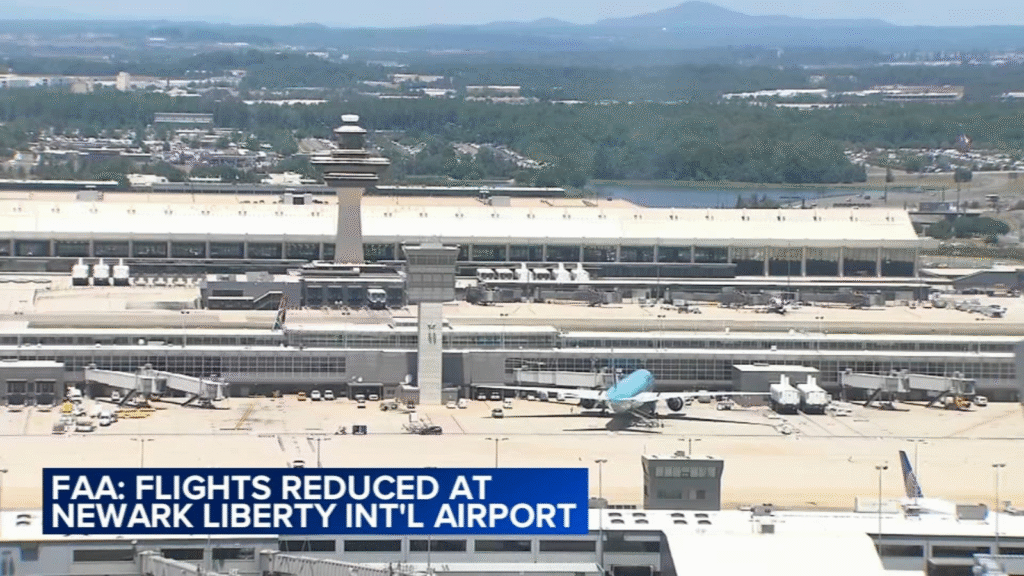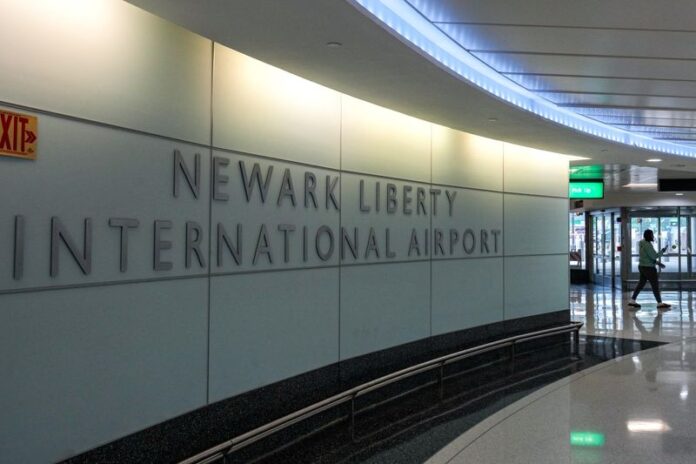As one of the busiest travel hubs in the country, Newark Liberty International Airport (EWR) is a critical gateway not only for New Jersey, but for the entire Northeastern corridor. But behind the scenes, the air traffic control systems managing that flow are, alarmingly, based on decades-old technology — some of it dating back to the World War II era. Now, with staffing shortages, outdated equipment, and a major runway project underway, the Federal Aviation Administration (FAA) is stepping in with a series of changes designed to relieve pressure and reduce delays.

If you’re planning to travel through Newark in the coming months or just want to better understand the technology and logistics behind the skies above New Jersey, there’s a lot unfolding that’s worth knowing.
For more on the intersection of innovation and infrastructure in the Garden State, visit our Technology & Business section here.
✈️ New FAA Limits Take Effect at Newark
As of May 20, 2025, the FAA issued an interim order to temporarily reduce flight operations at Newark Liberty. These changes aim to alleviate delays caused by several compounding factors — ongoing runway construction, chronic staffing shortages, and equipment that, according to critics, belongs in a museum rather than a modern air traffic control center.
Here’s what’s changing:
- Until June 15, 2025 (weekdays):
- 28 arrivals and 28 departures per hour
- From June 15 onward (excluding Saturdays):
- Rates will increase to 34 arrivals and 34 departures per hour
- Saturdays through end of 2025:
- Reduced rates will remain in effect due to continued weekend construction on Runway 4L/22R
These temporary restrictions could be revised depending on airport capacity and how delays are affected in the coming months.
🧰 Why the Restrictions? Old Tech and Modern Headaches
The FAA has made it clear: they’re not just dealing with construction. Newark’s challenges run much deeper — into the very technology that guides your flight from takeoff to touchdown.
Much of the air traffic control system serving Newark and nearby airports still relies on outdated copper wiring and systems that were initially designed decades ago. It’s a fragile network prone to failure, and recent malfunctions have underscored just how vulnerable the system is.
To address these issues, the FAA is taking aggressive steps, including:
- Installing three new high-bandwidth telecom connections between the New York STARS hub and the Philadelphia TRACON (Terminal Radar Approach Control)
- Replacing legacy copper wiring with modern fiber-optic infrastructure for faster and more reliable communication
- Deploying temporary backup systems at Philadelphia TRACON to maintain redundancy during the transition
- Establishing a new STARS hub in Philadelphia to make the system less reliant on a single source of data
These upgrades are designed to bring air traffic control operations into the modern era, increasing speed, reliability, and safety for everyone flying through Newark.
🧑✈️ Staffing Up: Controllers in Training
Technology isn’t the only issue. The FAA is also addressing the ongoing air traffic controller staffing shortage — a problem that has affected airports across the country, but is particularly acute in high-traffic areas like the New York metro.
At Philadelphia TRACON Area C — the facility responsible for directing traffic in and out of Newark — there are:
- 22 fully certified controllers
- 5 fully certified supervisors
- 21 individuals in training, including 10 undergoing on-the-job training
Of those 10, all are certified in at least one operational position, and three are certified in multiple roles — which means they can contribute to operations without constant supervision.
Looking forward, the FAA says training classes are fully booked through July 2026, a sign that they’re playing the long game to rebuild a pipeline of qualified professionals who can help bring the National Airspace System back up to speed.
📍 What It Means for New Jersey Travelers
For passengers flying into or out of Newark Liberty, these changes could result in fewer delays over the long term — but in the short term, expect adjustments to flight schedules and availability. Airlines have been briefed and are expected to accommodate the new limits while maintaining service reliability.
If you’re flying during peak times, especially on Saturdays or holiday weekends, keep an eye on your itinerary and consider arriving at the airport earlier than usual. Reduced runway availability and the ongoing transition to updated systems may still cause some hiccups along the way.
🚀 A Modernization Moment for the Garden State
New Jersey plays a central role in the Northeast’s transportation network — and the updates happening at Newark Liberty are just one piece of the larger puzzle. As Explore New Jersey continues to track how infrastructure, business, and technology intersect across the state, this is a pivotal moment to watch.
These investments in air traffic infrastructure, staff training, and modern telecommunications aren’t just about Newark — they’re about preparing New Jersey for the next generation of air travel, commerce, and connectivity.
Stay informed with the latest developments in aviation, innovation, and more by visiting our Technology & Business section.
📡 Explore. Understand. Elevate.
From takeoff to touchdown, Explore New Jersey is your hub for what’s next in the Garden State.











